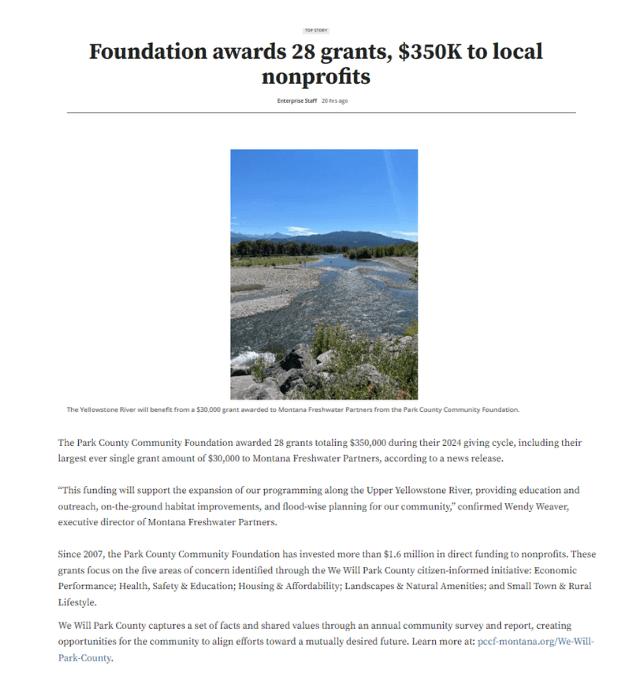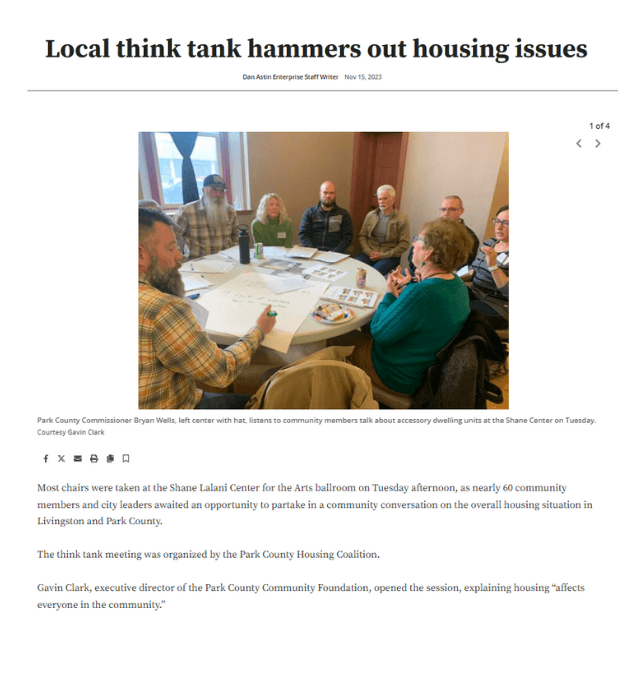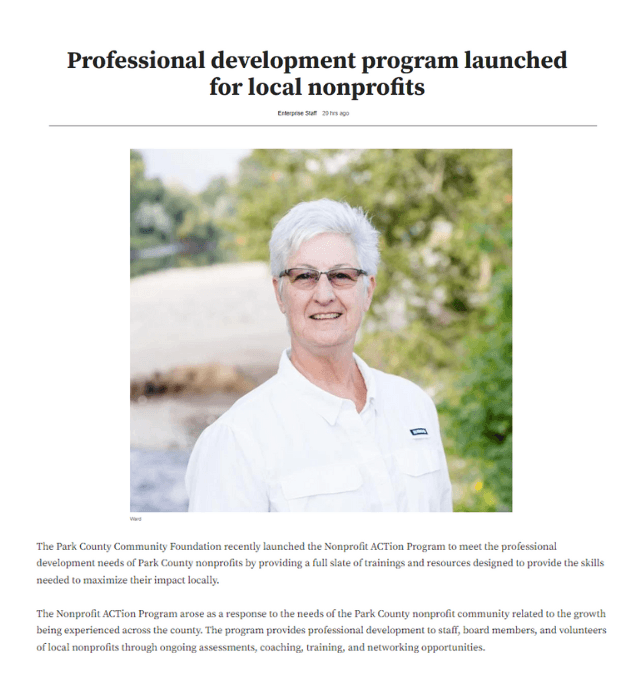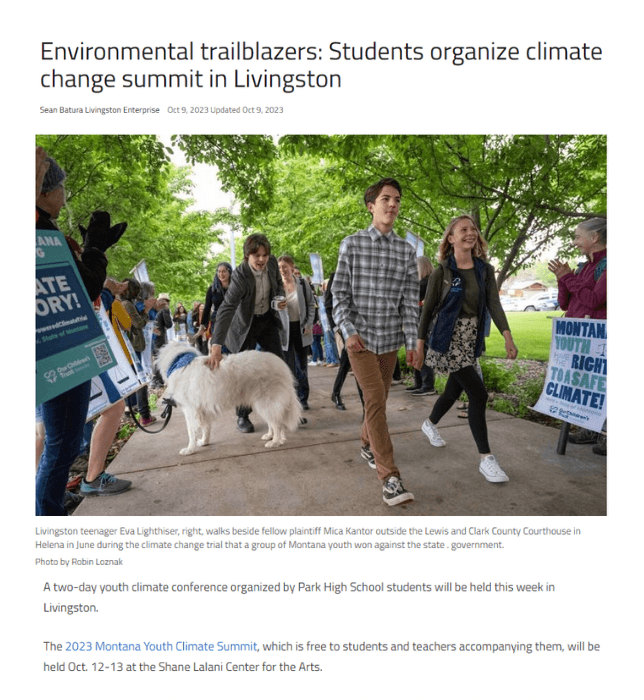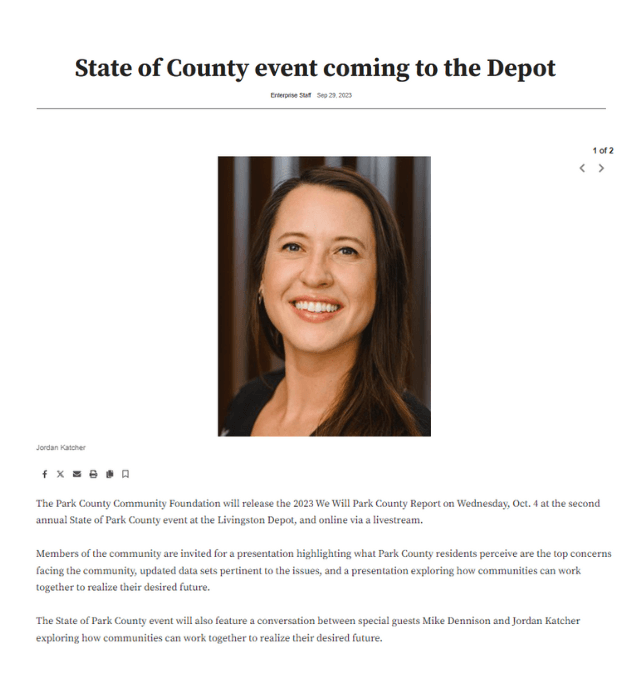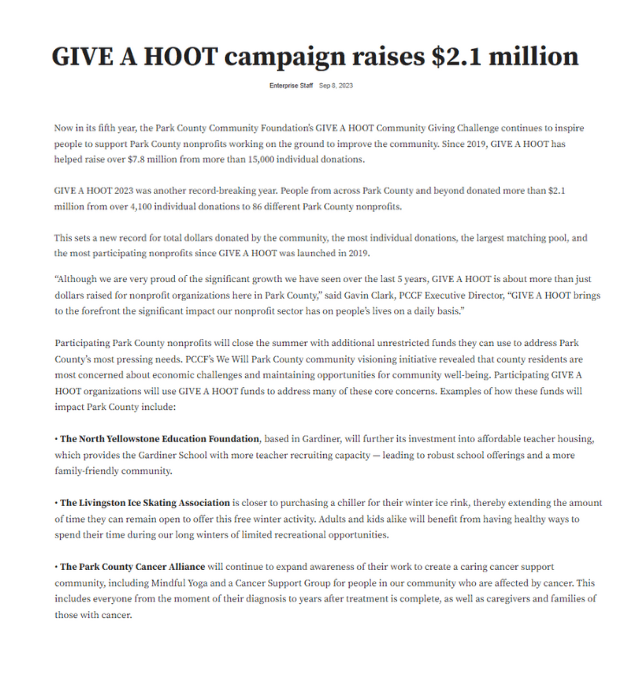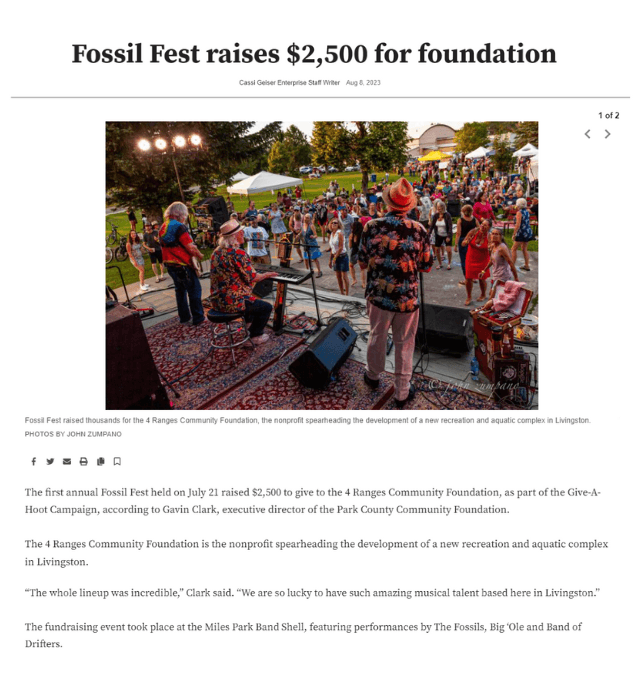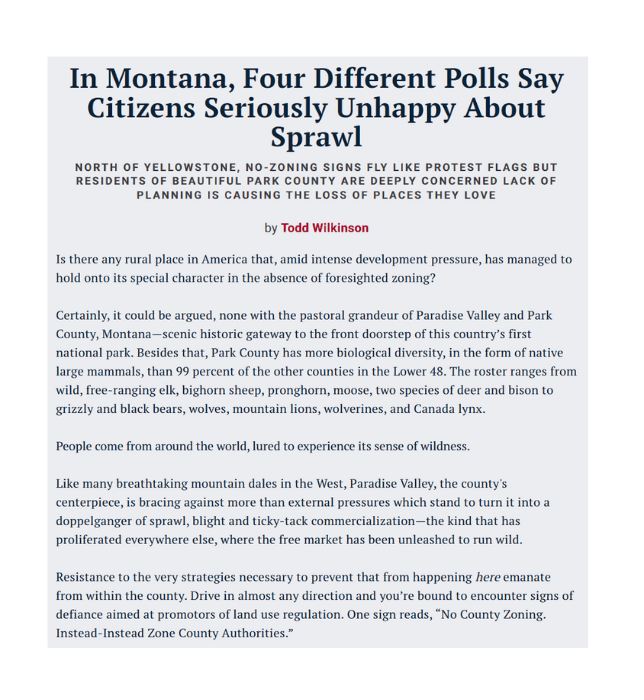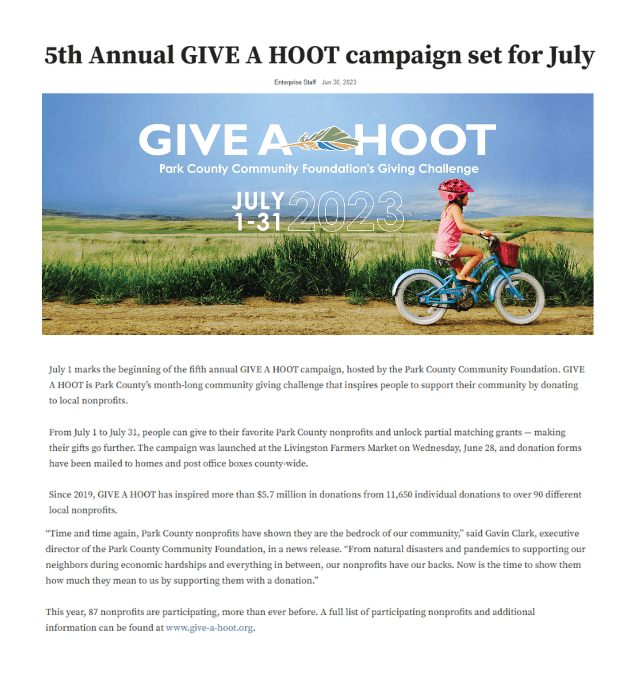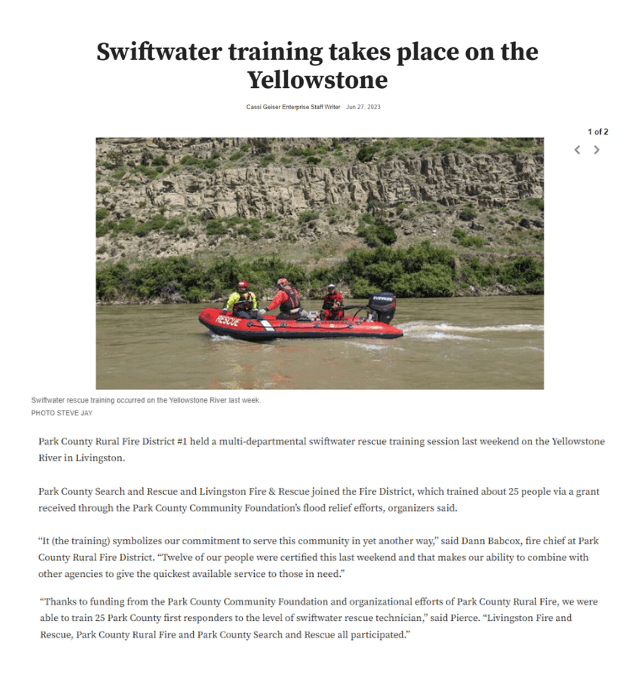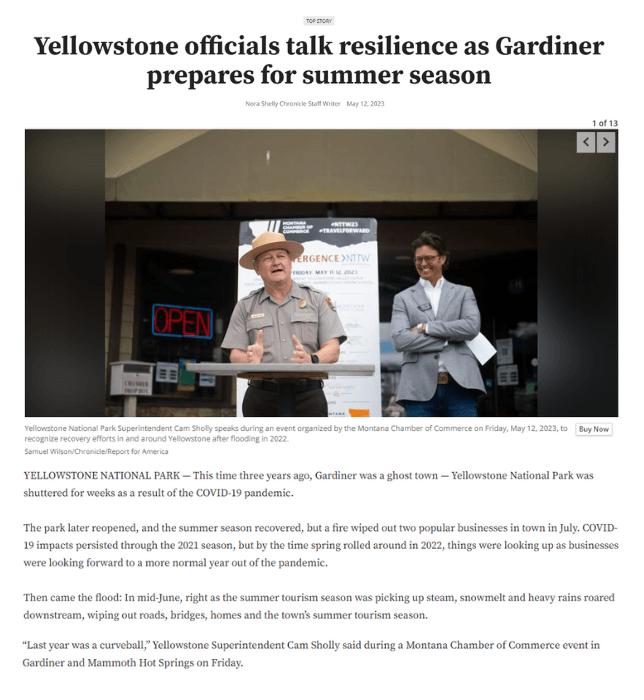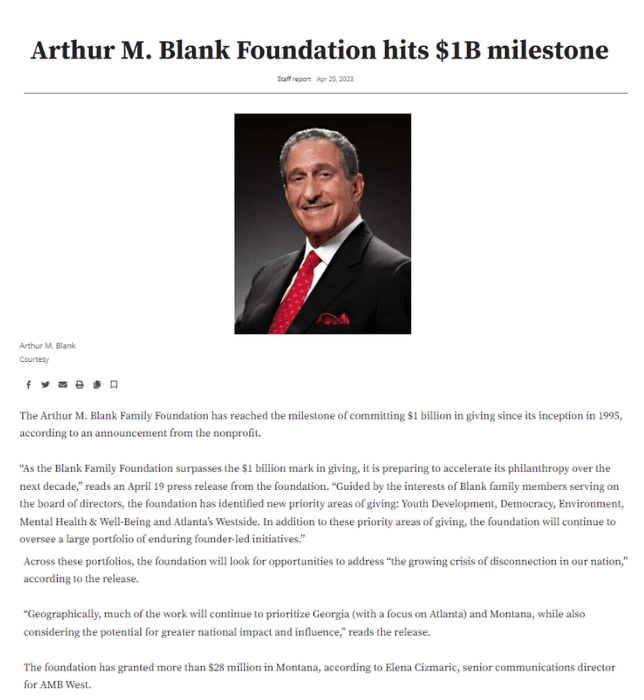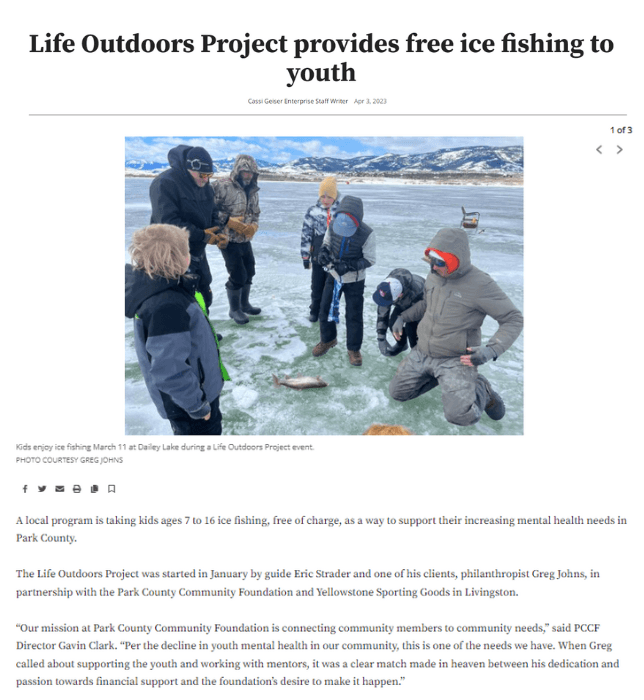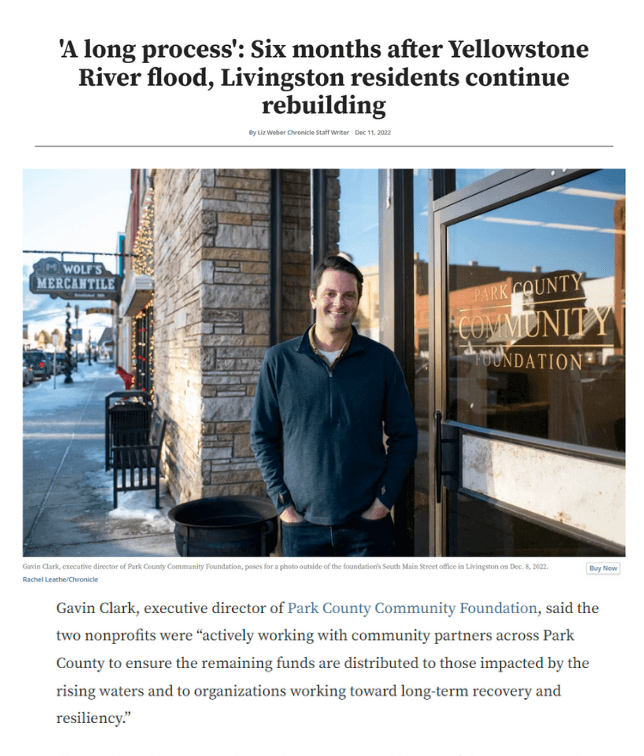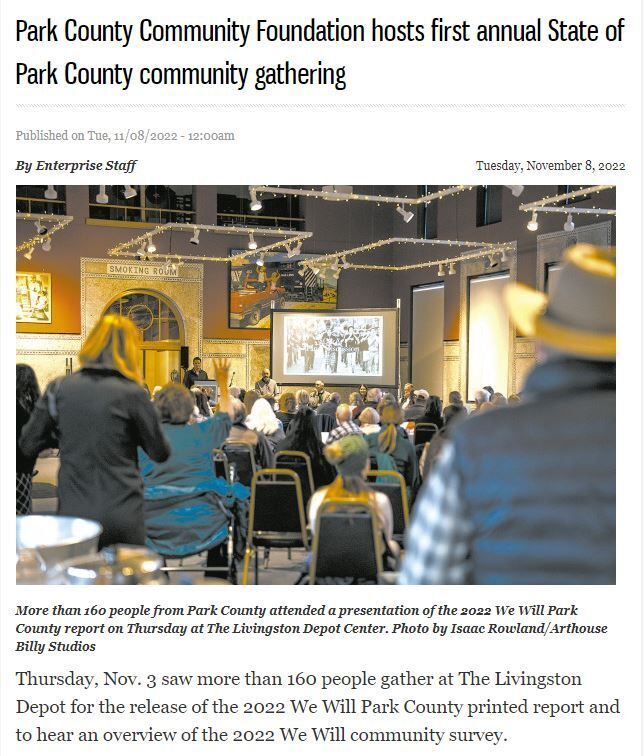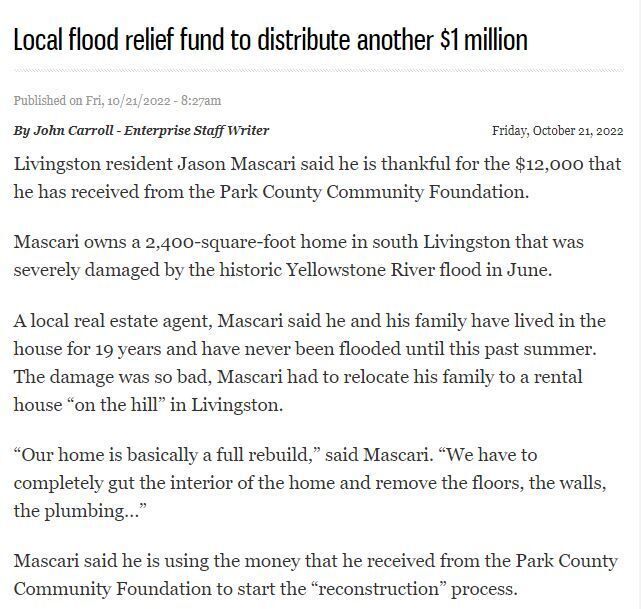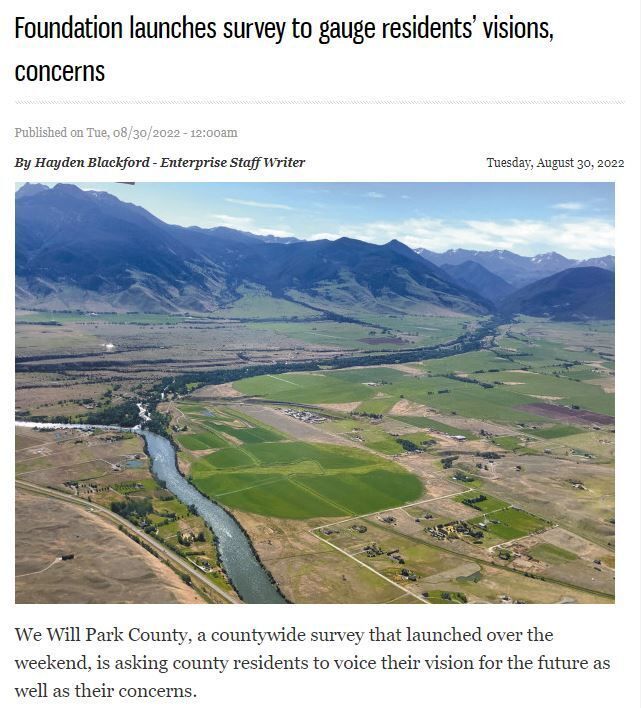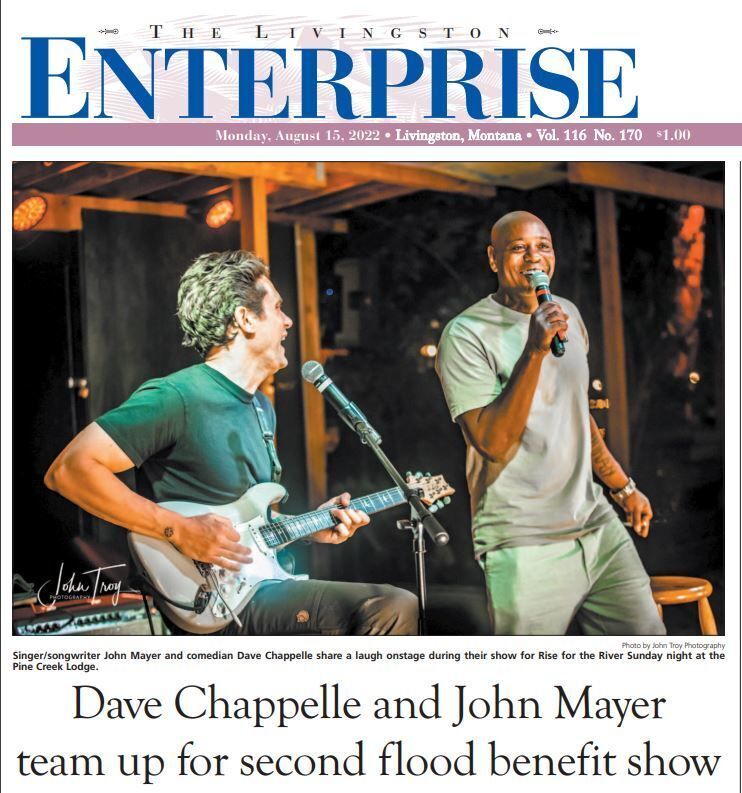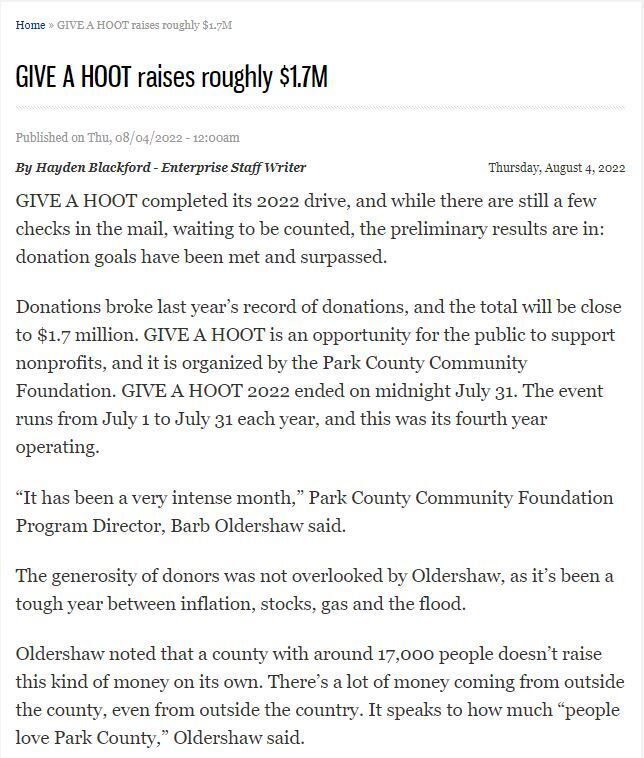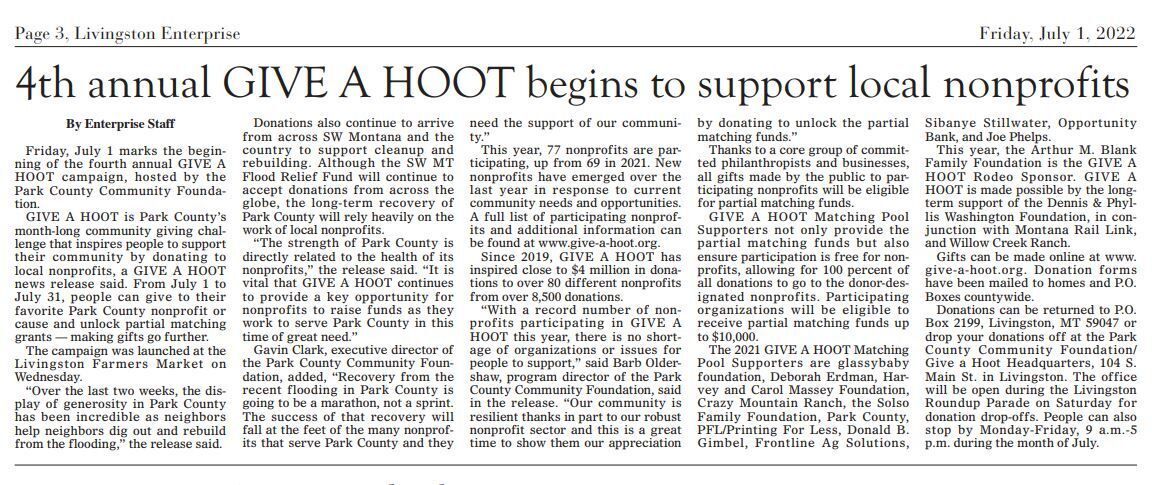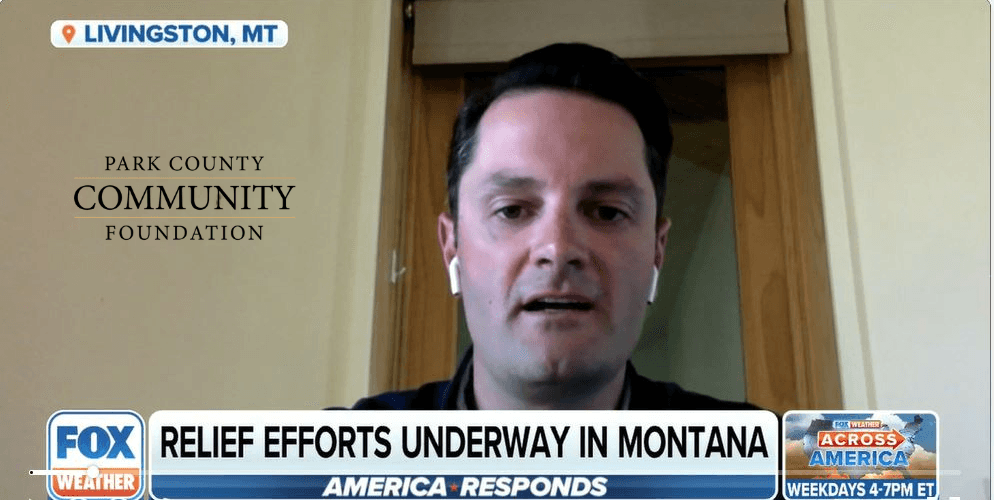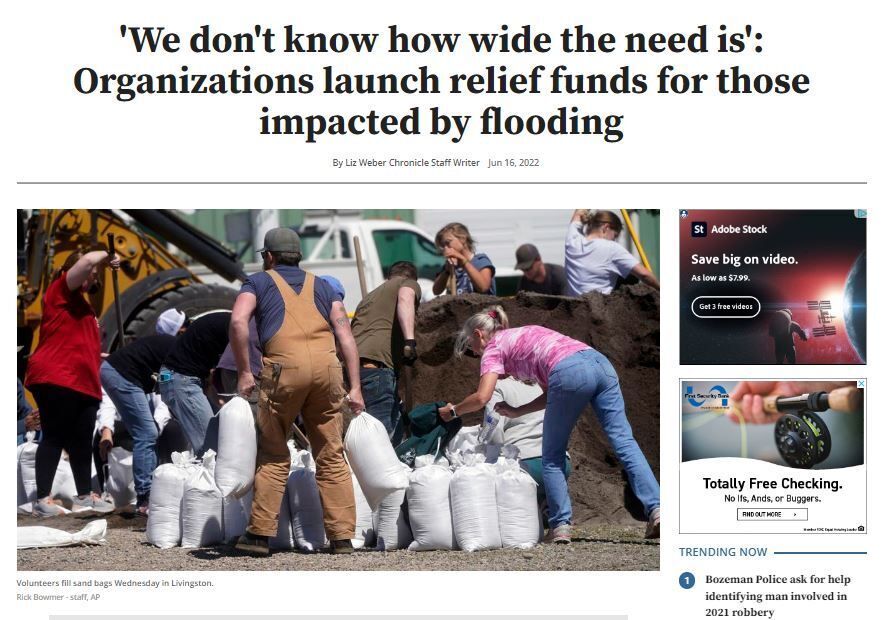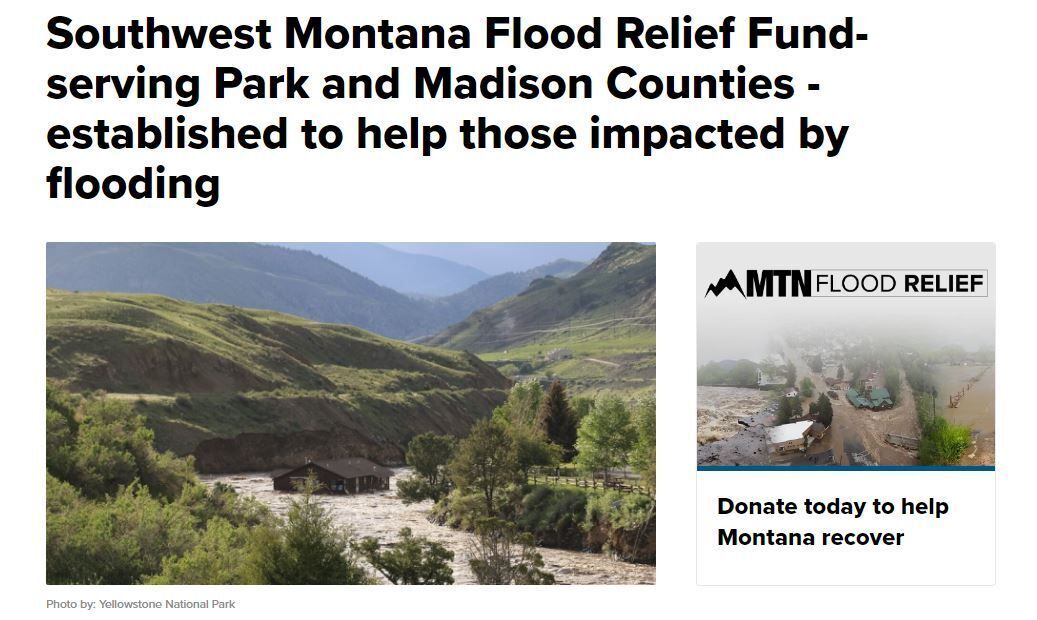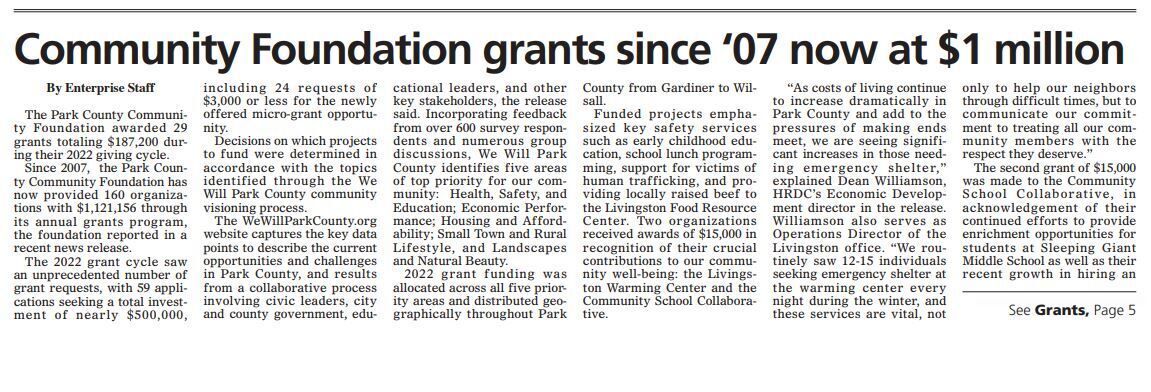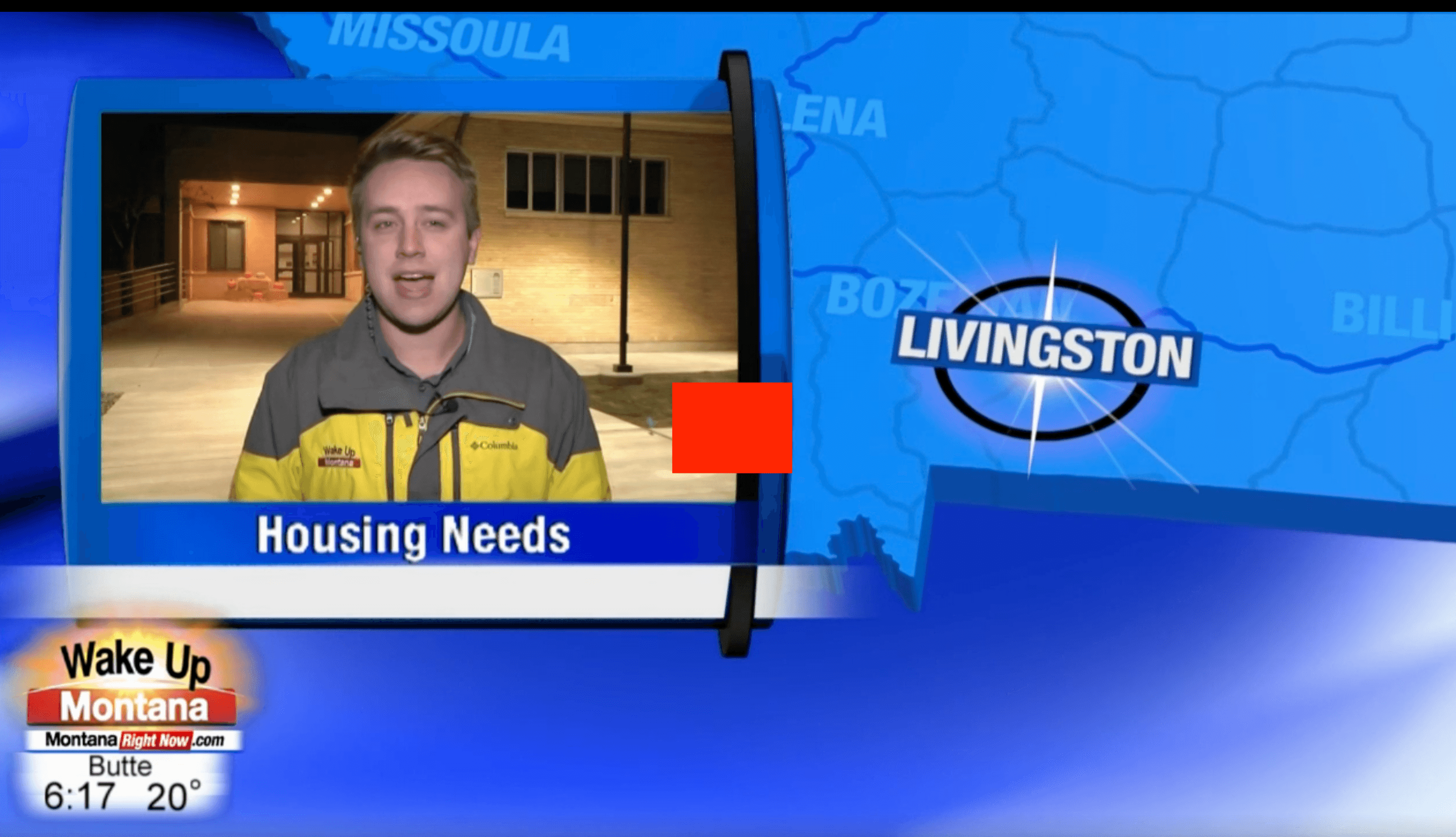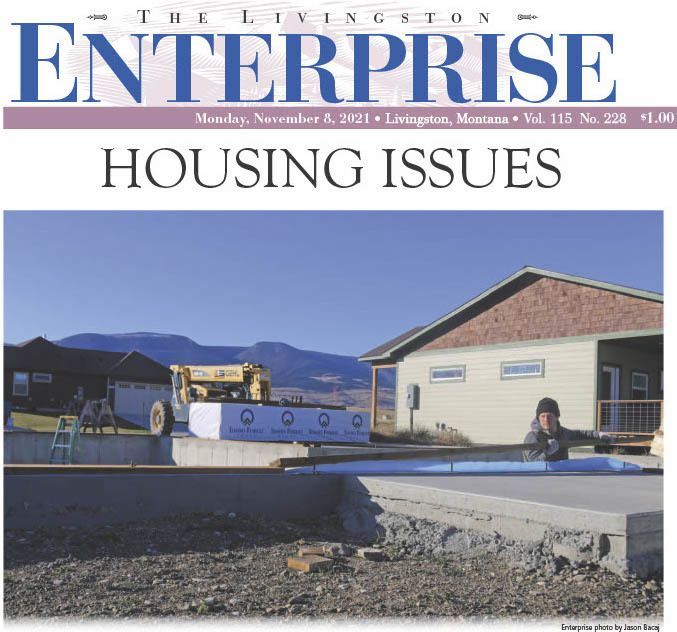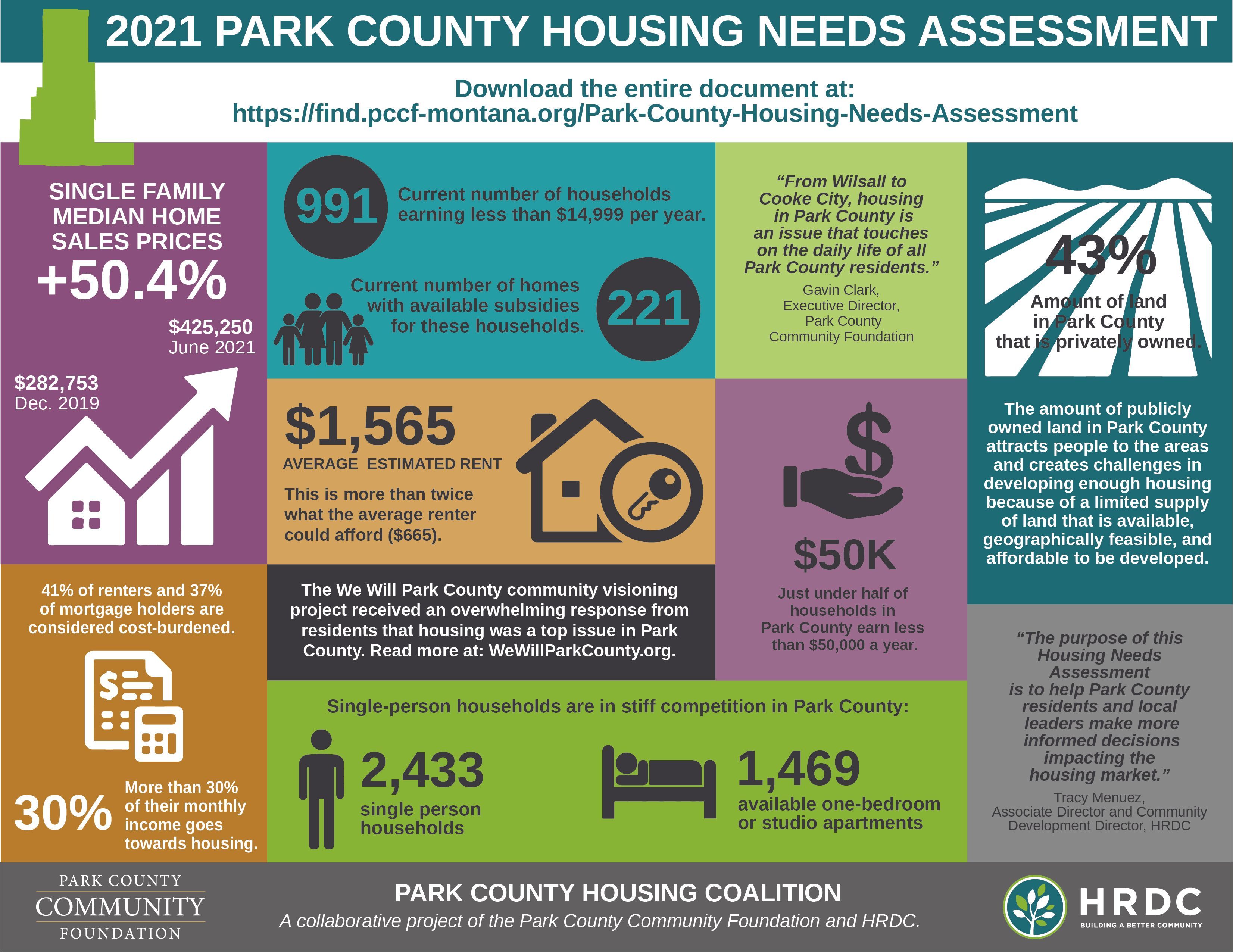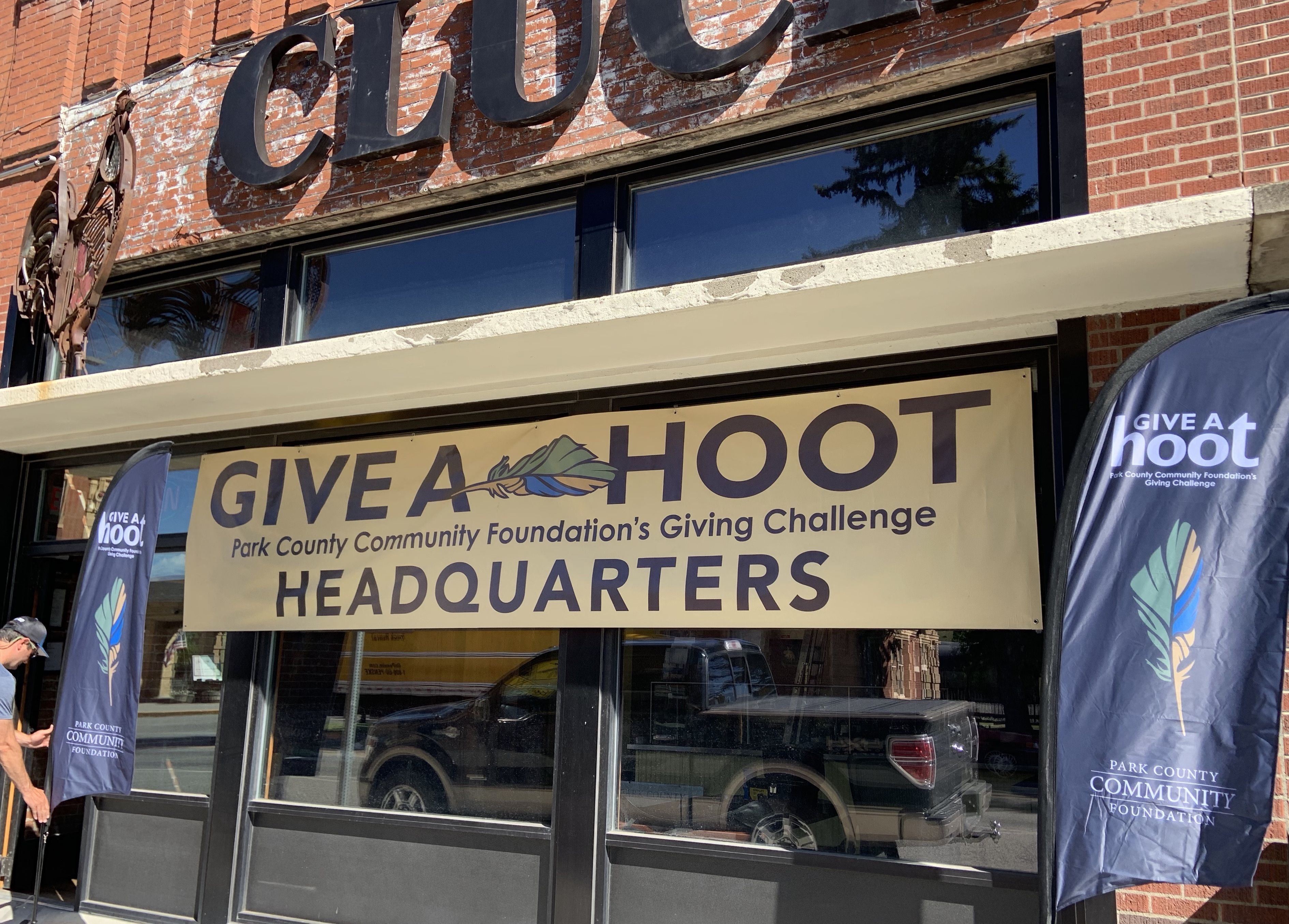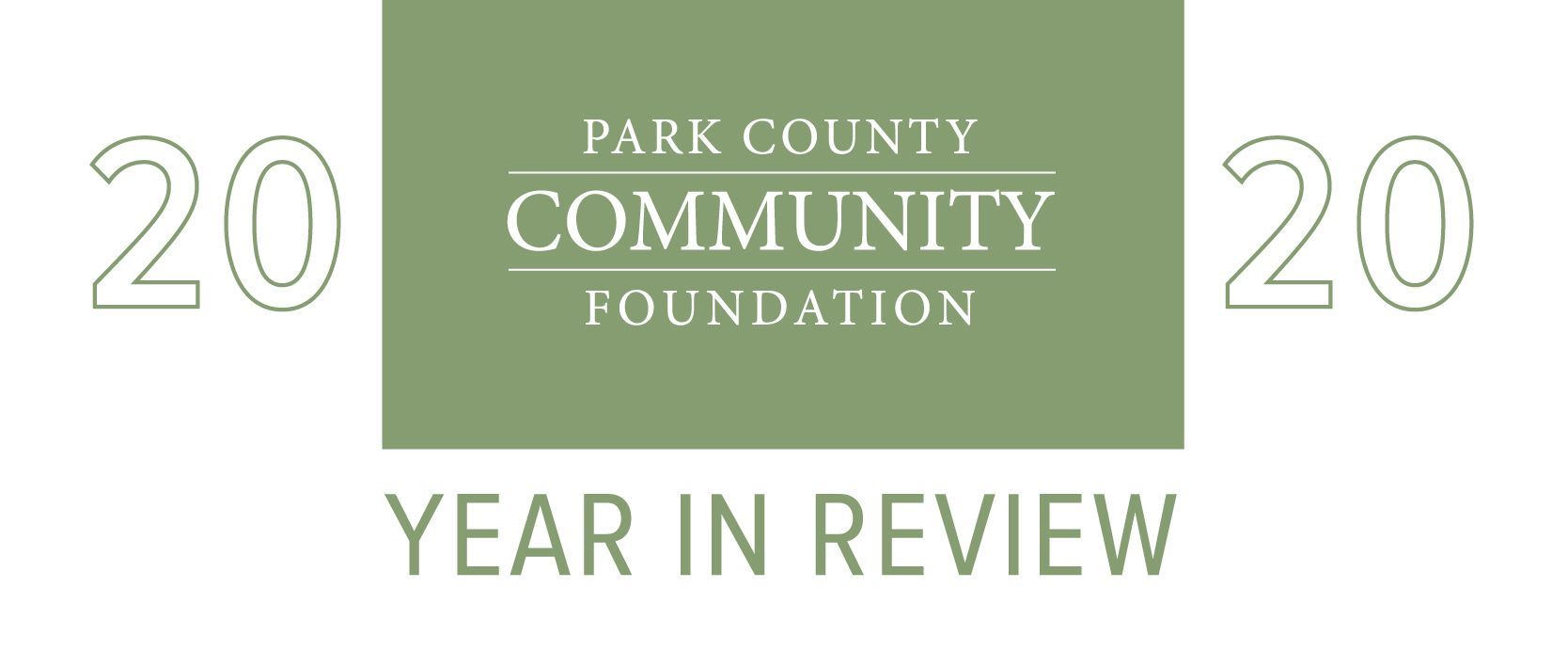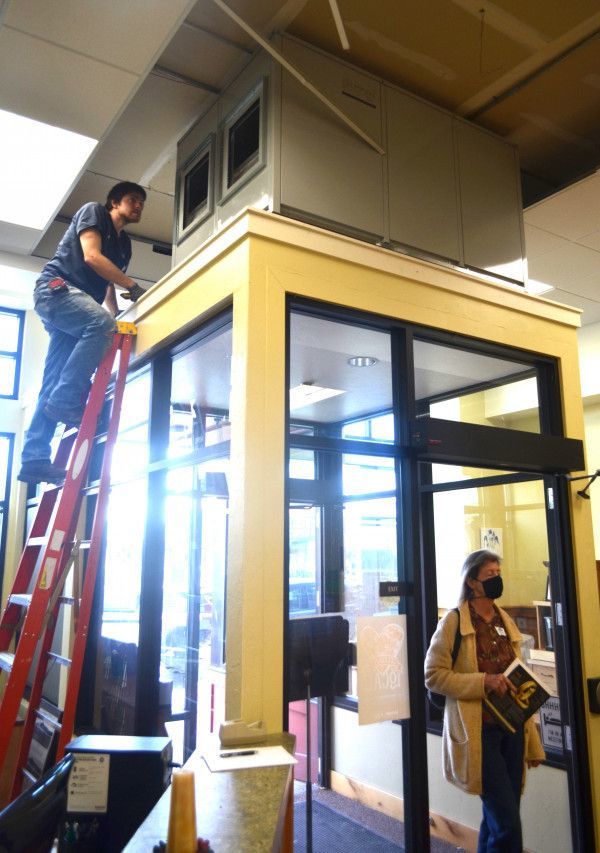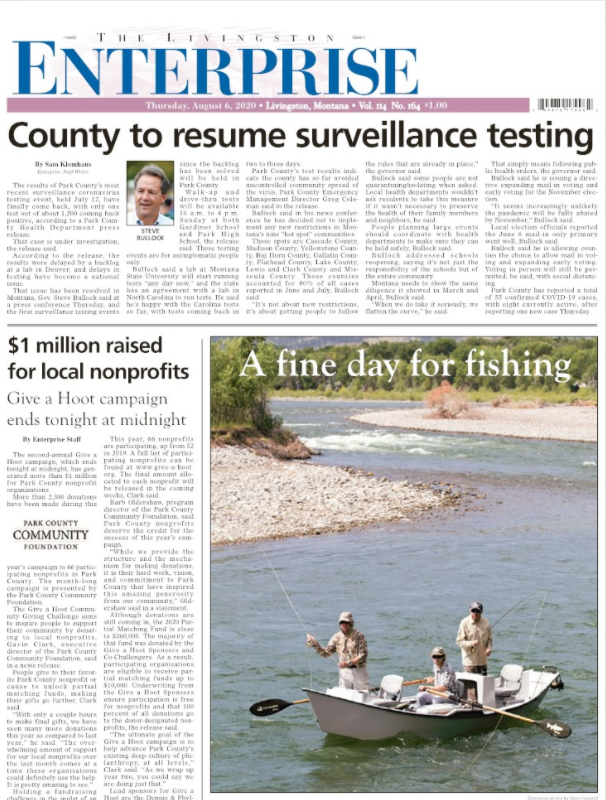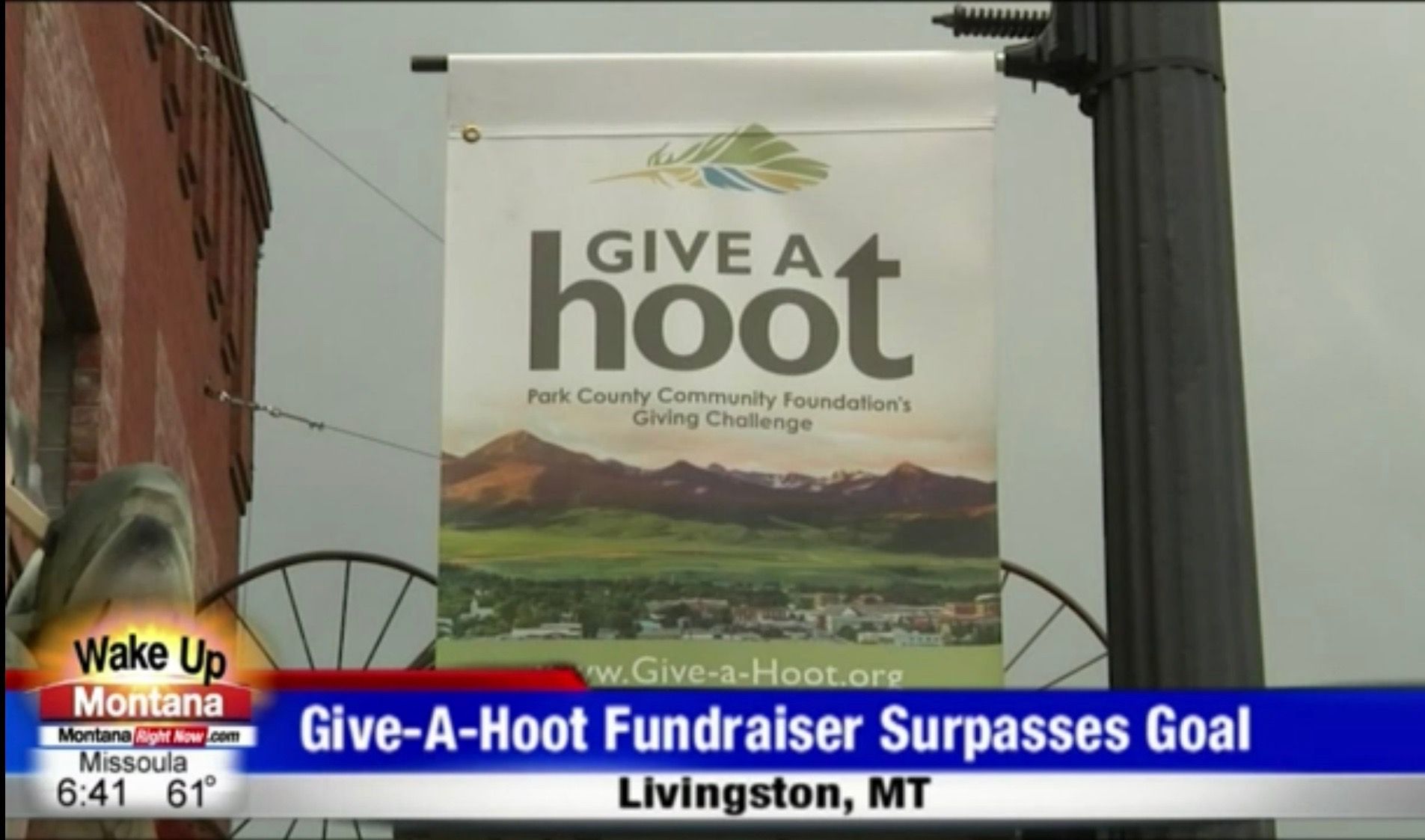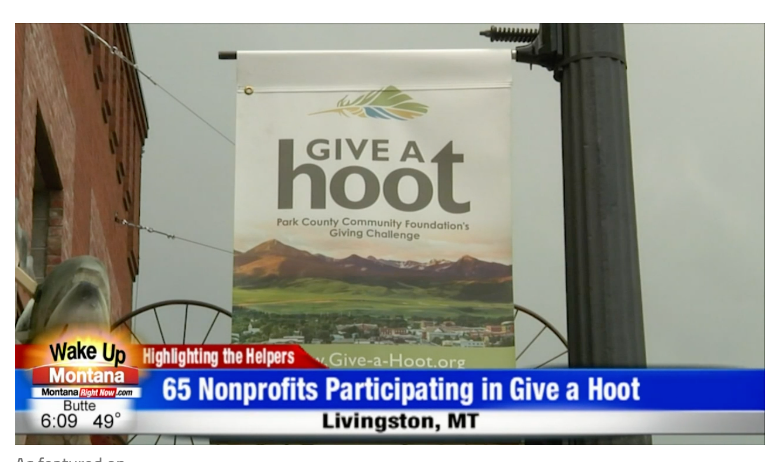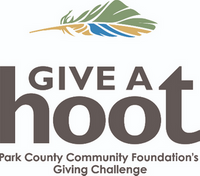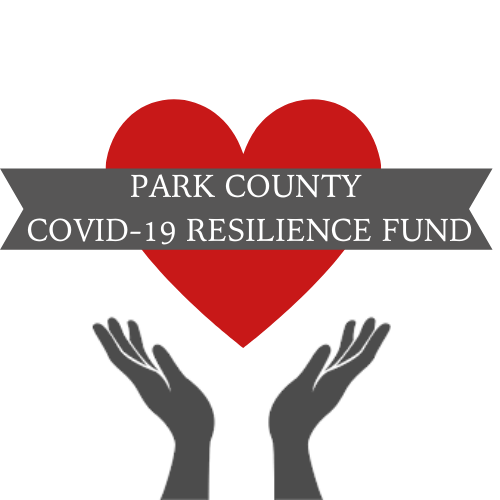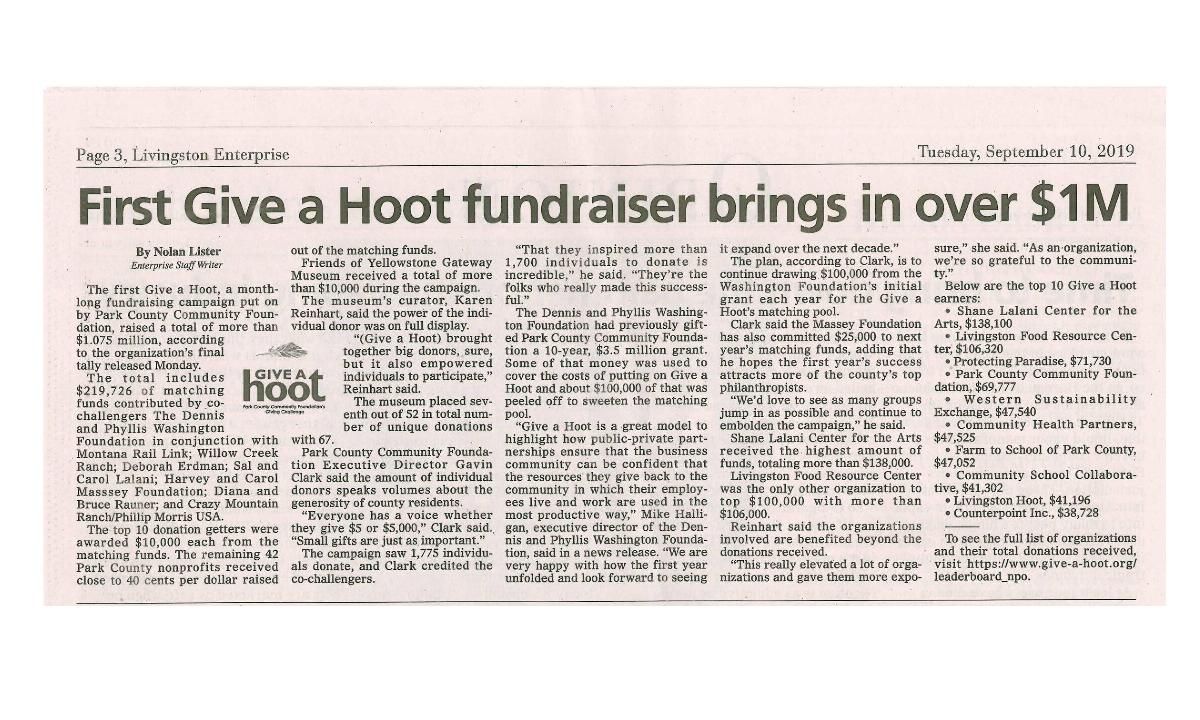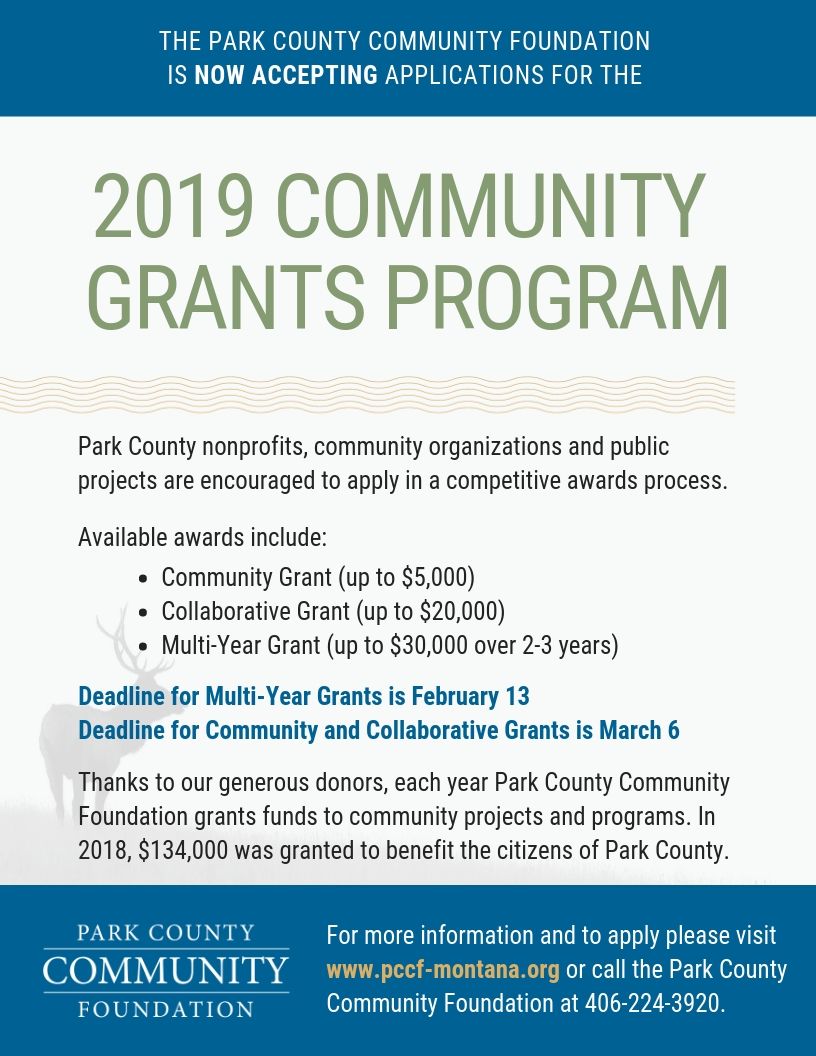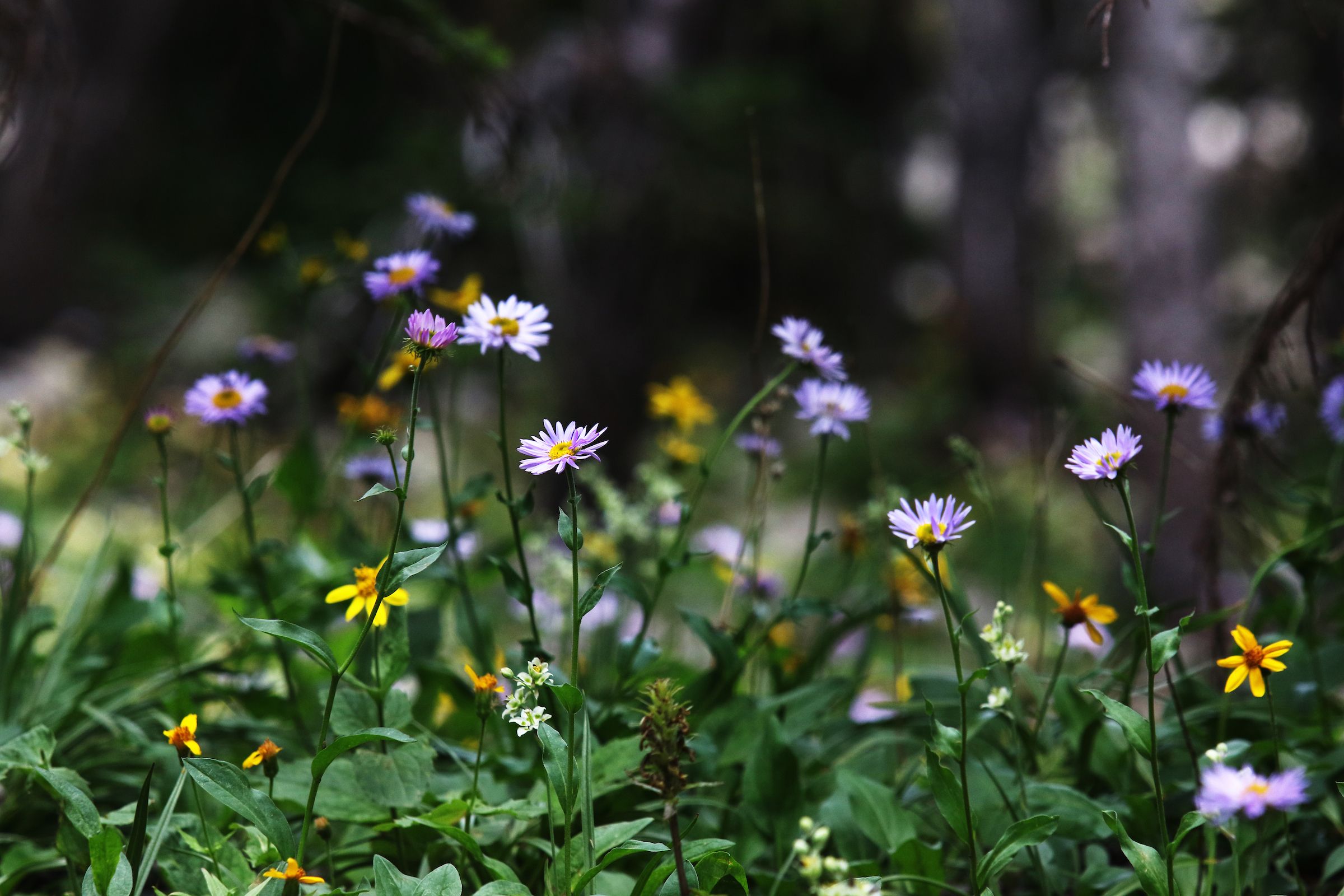If you want to be in the know about what’s going on at the Community Foundation, you’ve come to the right place.
Be sure to check back regularly to get our latest news updates.
A nonprofit is one step closer to completing a 56-mile trail project connecting Gardiner to Livingston after acquiring a 3-mile stretch of land from Emigrant to Park County. This segment serves as the foundation for the Yellowstone Heritage Trail.
In Park County, Montana, the combination of people and nature creates a community far greater than the sum of its parts. There, locals really do Give-a-Hoot! Read our interview below with Gavin Clark, executive director of the Park County Community Foundation about its Give-a-Hoot festivities happening throughout the month of July and Clark’s thoughts on what makes Park County a standout in the Northern Rockies.
The Park County Community Foundation awarded 28 grants totaling $350,000 during their 2024 giving cycle, including their largest ever single grant amount of $30,000 to Montana Freshwater Partners, according to a news release.
“This funding will support the expansion of our programming along the Upper Yellowstone River, providing education and outreach, on-the-ground habitat improvements, and flood-wise planning for our community,” confirmed Wendy Weaver, executive director of Montana Freshwater Partners.
Since 2007, the Park County Community Foundation has invested more than $1.6 million in direct funding to nonprofits. These grants focus on the five areas of concern identified through the We Will Park County citizen-informed initiative: Economic Performance; Health, Safety & Education; Housing & Affordability; Landscapes & Natural Amenities; and Small Town & Rural Lifestyle.
Gavin Clark, executive director, Park County Community Foundation, and Katherine Daly, program manager of the Park County Housing Coalition, introduced the PCHC Housing Action Plan for 2024, announcing 12 policy tools for improving affordable housing to be implemented over a three-year period, dependent on community interest and support. One of the tools already being advocated and implemented is the Resident Owned Community program,
Three other affordable housing tools were introduced and then the group split into three groups to discuss the topics. The topics discussed were: accessory dwelling units, or ADUs, employer-assisted housing partnerships, or workforce housing, and zoning reformation.
The Park County Community Foundation recently launched the Nonprofit ACTion Program to meet the professional development needs of Park County nonprofits by providing a full slate of trainings and resources designed to provide the skills needed to maximize their impact locally.
The North Yellowstone Education Foundation was founded six years ago by a group of parents in Gardiner, Montana who recognized the changing landscape and decided to take action. NYEF has been working tirelessly ever since to support education in the community and ensure that new teachers have a place to live.
NYEF has successfully funded $800K to support phase one of its Teacher Housing Initiative (THI). The initiative is a collaborative project with Gardiner Public School (GPS) and aims to attract and retain teachers and staff by providing affordable housing to supplement their wages. According to a press release, the $800,000 project was made possible with the help of numerous donors, including The Park County Community Foundation, George L. Ohrstrom Jr. Foundation, Gianforte Family Foundation, Steele-Reese Foundation, Arthur M. Blank Family Foundation, Gardiner Area Resort District, and First Interstate Bank and Foundation. Additionally, private donors have contributed over $350,000 to the project.
Although many locals are worried about the future, they are well-positioned to address the challenges they face, according to the 2023 We Will Park County report presented by the Park County Community Foundation.
The foundation surveyed more than 850 people for the report between May and July and found that only 41% of respondents shared optimism about the future of Park County. Twenty-five percent of respondents were neutral about the future and 34% reported being pessimistic, according to the report, which can be found at https://tinyurl.com/2vtd9bew.
The foundation presented these findings and others at the Livingston Depot Center on Oct. 4.
A two-day youth climate conference organized by Park High School students will be held this week in Livingston.
The 2023 Montana Youth Climate Summit, which is free to students and teachers accompanying them, will be held Oct. 12-13 at the Shane Lalani Center for the Arts.
More than 40 teenagers from across Montana are expected to be in town for the conference and workshop.
The Park County Community Foundation will release the 2023 We Will Park County Report on Wednesday, Oct. 4 at the second annual State of Park County event at the Livingston Depot, and online via a livestream.
Members of the community are invited for a presentation highlighting what Park County residents perceive are the top concerns facing the community, updated data sets pertinent to the issues, and a presentation exploring how communities can work together to realize their desired future.
The State of Park County event will also feature a conversation between special guests Mike Dennison and Jordan Katcher exploring how communities can work together to realize their desired future.
Now in its fifth year, the Park County Community Foundation’s GIVE A HOOT Community Giving Challenge continues to inspire people to support Park County nonprofits working on the ground to improve the community. Since 2019, GIVE A HOOT has helped raise over $7.8 million from more than 15,000 individual donations.
GIVE A HOOT 2023 was another record-breaking year. People from across Park County and beyond donated more than $2.1 million from over 4,100 individual donations to 86 different Park County nonprofits.
This sets a new record for total dollars donated by the community, the most individual donations, the largest matching pool, and the most participating nonprofits since GIVE A HOOT was launched in 2019.
Watch the national interview featuring PCCF Executive Director, Gavin Clark
Joint effort between the Park County Community Foundation (PCCF) and the Greater Gallatin United Way (GGUW) to streamline support and focus it to the areas of the region that need it most.
Thanks to local reporter Noah Schmick of Wake Up Montana for helping us spread the word about our recently released Park County Housing Needs Assessment.
The Park County Housing Coalition, a collaborative project between PCCF and HRDC, releases the 2021 Park County Housing Needs Assessment.
As we reflect on the successes of the past year, we are excited to share with you highlights of our work to connect people and resources with the most pressing problems and opportunities facing Park County.
The 2021 Year in Review features highlights from the past year that have allowed us to learn, engage. and give within our community.
Your support of the Park County Community Foundation made it possible for us to step up and meet community needs during a tumultuous year. Check out our Year in Review newsletter for updates in how we've put your contributions to work.
Livingston Enterprise article from November 5, 2020, highlights the installation of a new ventilation system at the Park County Senior Citizen Center.
KULR-8 highlighted the closing hours of our campaign on "Wake Up Montana"
PCFF's annual Give a Hoot campaign featured on KULR-8's "Wake Up Montana"
Article in The Livingston Enterprise.
Please click on the image to see the Livingston Enterprise newspaper article from September 10, 2019.
Did you know that Park County graduating seniors received over $2 million in academic scholarships? We're proud to be part of that giving community, with Thronson Scholarships awarded to two Park High graduates, and one each to Shields Valley and Gardiner graduating seniors. Read more about the Barbara Thronson Scholarship here.
The Park County Community Foundation has received a $3.5 million grant from Montana-based Dennis and Phyllis Washington Foundation, in conjunction with Montana Rail Link, and Willow Creek Ranch. Over the next ten years, the Park County Community Foundation will receive $250,000 from the Dennis & Phyllis Washington Foundation and $100,000 from Willow Creek Ranch per year– totaling $3.5 million.
The Barbara Thronson Scholarship through the Park County Community Foundation provides four scholarships for students graduating from Park County high schools based on enrollment. The scholarship – $500 per successful semester completed – will be provided to each of four students continuing their post-secondary education at two- and/or four-year institutions.
Give a Hoot is Park County's first ever month-long community giving challenge that will connect community members with causes they care about most. The goal of Give a Hoot is to inspire people to come together, show pride in their community and contribute to support local nonprofit organizations working in Park County.
All Park County nonprofits are invited to join us for one of three info sessions being held to share details, answer questions and arm you with the info they need to decide if Give a Hoot is right for them. To register for an upcoming info session click the title.
Legal responsibilities, strategic vision, financial stewardship… Board Members have a lot on their plates. Whether you are a seasoned board member or a new recruit, this workshop will cover all you need to know to become an excellent board member.
Park County nonprofits, community organizations and public projects are encouraged to apply in a competitive awards process.


